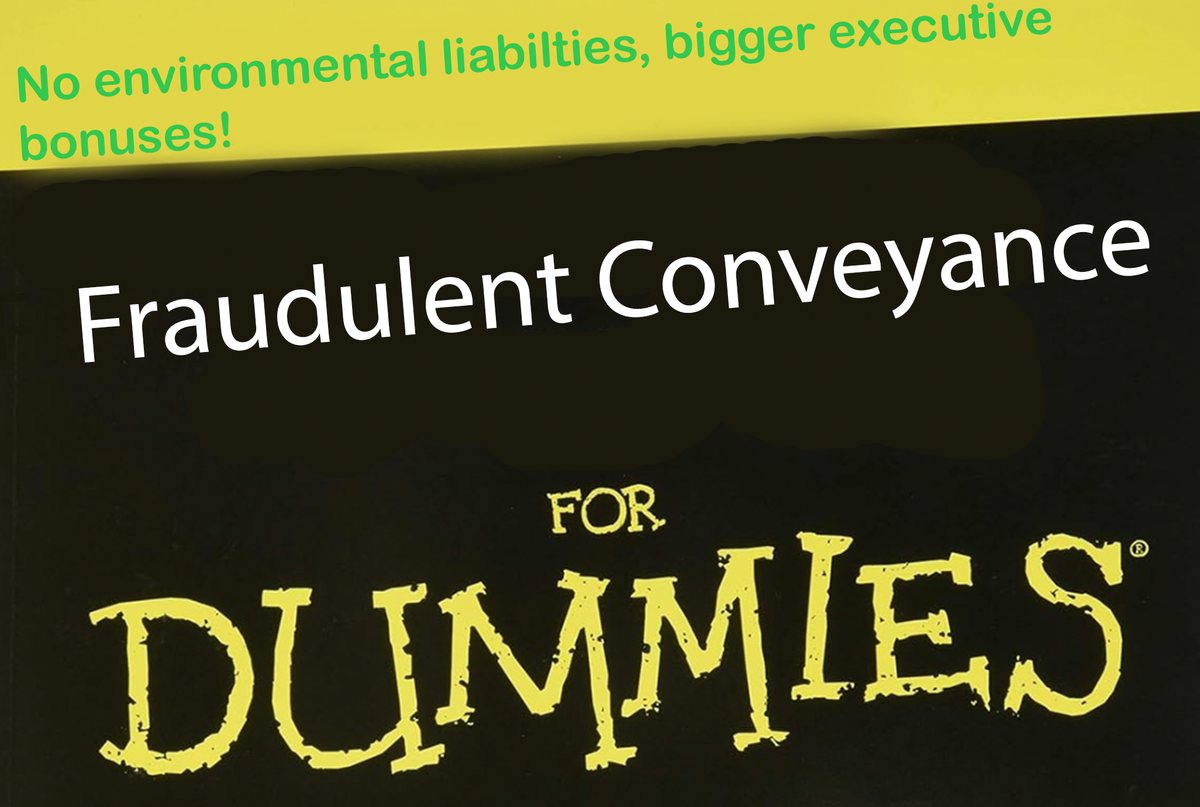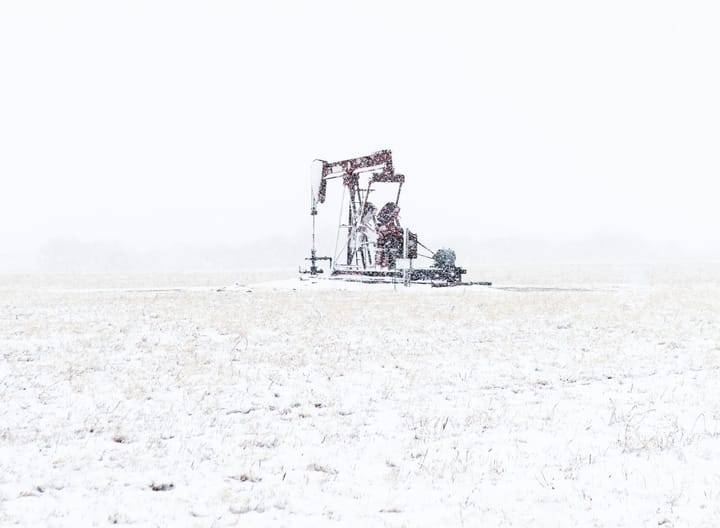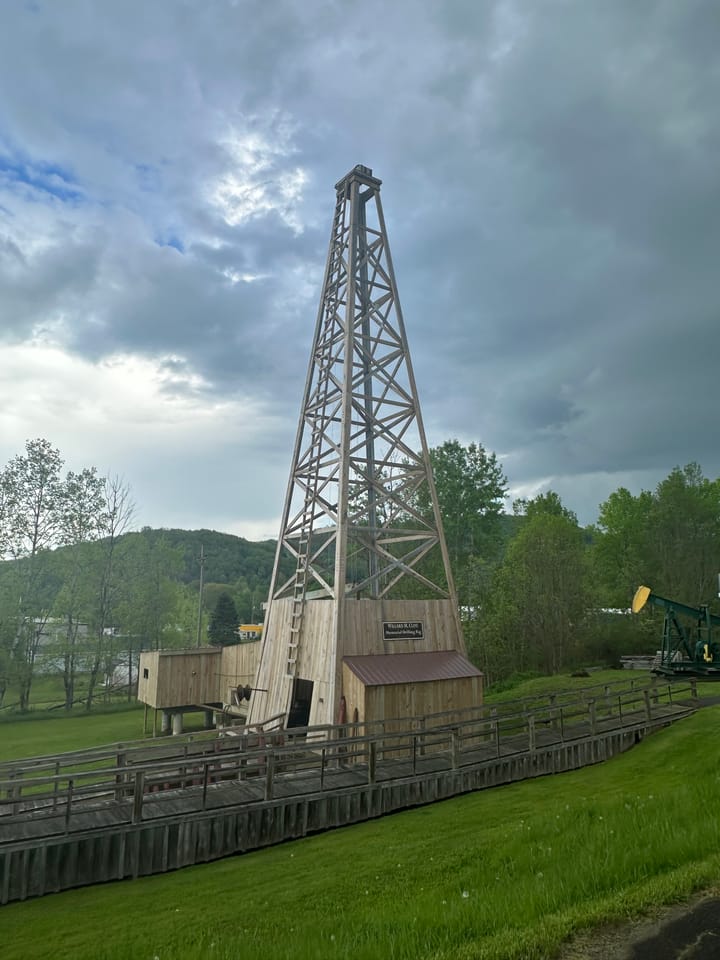Big Oil is Sticking Us with the Bill
State regulators are allowing the oil industry to walk away from its cleanup responsibilities.

In 2015 the U.S. Department of Justice announced a historic $5 billion settlement against a company you’ve likely never heard of before.
“The Kerr-McGee Corporation spent decades despoiling our nation’s natural resources, leaving a toxic legacy for communities across the nation, from Sidney, New York, to the Navajo nation,” said U.S. Attorney [Preet] Bharara. “Then, Kerr-McGee tried to escape the consequences of its misdeeds by transferring its most valuable assets to affiliates, leaving an insolvent shell behind, unable to pay its environmental liabilities.”
As that statement explained, “this settlement resolves fraudulent conveyance claims,” which is what the lawyers call this particular crime. This mining company poisoned parts of the country, kept the profits, and attempted to hand off the liabilities to the public by spinning off a new company which had all of the liabilities but no money to pay for them (aka insolvent shell). You may be thinking this is such an obvious ploy that it is no wonder they got caught. Seems like something a child would employ as a strategy, right?
The corporation that was spun off was called Tronox Inc. An article about the case in 2014 notes what Kerr-McGee corporation kept after spinning off Tronox.
“The company, rather than pay for the environmental mess it created, decided to shift the liabilities between 2002 and 2006 into Tronox, the Justice Department said, while Kerr-McGee kept its valuable oil and gas assets.”
So this company spun off its crappy assets and saddled them with its environmental liabilities and kept the valuable oil and gas assets. While no one has likely heard of Tronox or Kerr-McGee, the name of the parent company that employed this “fraudulent conveyance” strategy to get its hands on the still valuable oil and gas assets, is Anadarko.
I will return to Anadarko, but first I want to talk about Occidental.
Occidental
Occidental Petroleum (known as Oxy) has gotten a lot of headlines in the past decade. The legendary investor Warren Buffett has invested tens of billions of dollars in the company. Oxy’s CEO Vicki Hollub is a big fan of carbon capture and says that it will allow the industry to keep selling oil for “60, 70, 80 years." In 2014 Oxy spun off its California assets into California Resources Corporation (CRC) which it saddled with a lot of debt that it was unlikely CRC could pay back with the old and depleted oil fields it owned. And CRC could not — and declared bankruptcy in 2020 to get rid of its $5 billion in debt it couldn’t pay back. As you are reading this you may be thinking, “Can I just spin off all of my debt and let it die?” No. You are person, not a corporation, silly.
It would appear that Occidental did exactly what Andadarko did. It spun off its crappy assets and debt into a new company and then walked away. This seems an awful lot like the “fraudulent conveyance” that got Anadarko a conviction and $5 billion fine. The big difference is that no one has charged Occidental with any wrongdoing. The DOJ apparently has no interest in pursuing fraud in the oil industry so fraudulent conveyance is a big part of the oil industry’s current business model.
Occidental buys Anadarko
So, what to do with two oil companies that have spun off all of their bad assets and liabilities? In 2019, Occidental bought Anadarko for $38 billion creating a bigger company with quality oil and gas assets and none of that crappy stuff they spun off.
California Resources
After bankruptcy, CRC ( which at the time was really just “Oxy’s bad assets in California"), continued on as California’s largest oil company. Like its previous owner Oxy, CRC is talking a lot about the potential for carbon capture and storage. Also like its previous owner, CRC had grown in size recently as it just completed a merger with Aera Energy, LLC., another large California oil company with low quality assets. Aera Energy was formerly a joint venture of Exxon and Shell but, as companies do, it was spun off and is now owned by some of the apparently dumbest money out there – pension money. Exxon and Shell initially sold Aera’s assets in 2022 to German investors. ProPublica covered the deal including an assessment from Greg Rodgers, an attorney focused on oil and gas assets.
“You got bad assets with big liabilities, and you can get rid of both at the same time. That’s a win for Exxon and Shell,” Rodgers told ProPublica.
So now CRC is the largest oil company in California made up of bad assets formerly owned by Exxon, Shell and Occidental. This is a good time to revisit the language about fraudulent conveyence.
“Then, Kerr-McGee tried to escape the consequences of its misdeeds by transferring its most valuable assets to affiliates, leaving an insolvent shell behind, unable to pay its environmental liabilities.”
CRC is an insolvent shell when considering its environmental liabilities. Just as designed by the former owners of its bad assets — Oxy, Exxon and Shell.
As ProPublica explained in March 2023, the whole California oil industry is unable to pay its environmental liabilities. According to an analysis by CarbonTracker, the economic value of the oil left in the ground in California is far less than what it will take to clean up the mess the industry has made there. The California oil industry is now just a much larger version of Tronox. However, unlike Tronox (and Anadarko), no one is holding the industry accountable for its environmental liabilities.
There are laws that are supposed to require these oil companies to put aside the money required for clean up. But they are not enforced. California supposedly had a tough new law to require over $1 billion of bonding from the CRC/Aera merger. Read Joe Fassler’s in-depth article for all the details.
Then read Fassler’s next article to learn the details about “documents obtained by the nonprofit National Resources Defense Council via public records request, and shared with DeSmog, show CRC worked behind the scenes to suggest Aera’s wells should not be subject to the rules.”
Guess who didn’t put up the billion dollars in bonding?
But what about the existing bonding for these wells, you ask? Why didn’t Exxon, Shell and Oxy have to put up the funds to clean up the wells that they owned? Shouldn’t that be in the bank account of the state of California? It should. But it isn’t. Because this is another way the system is rigged. Big oil companies are considered “good for the cleanup money” so they don’t have to put up the money up front. Of course, they always spin off the wells to someone who doesn’t have that money and that is why there are millions of abandoned oil and gas wells in this country with no money to clean them up. I shouldn’t say no money. The U.S. public is already picking up the tab. The Inflation Reduction Act allocated $4.7 billion to be given to states to clean up the mess the oil industry made. That means, right now, the public is the one getting the bill - not Exxon, not Shell, not Occidental.
As I’ve written, this is the oil industry plan. And it is working very well.
California’s policy on holding the oil industry accountable for its environmental liabilities is a failure. The state needs to go after Exxon, Shell and Occidental to get the money they owe the people of California. Instead they are helping the industry with its exit strategy. Remember what they said about holding Anadarko responsible?
“This result emphatically demonstrates the Justice Department’s commitment to environmental justice for all Americans, and it fulfills the department’s promise to hold accountable those who pollute and those who try to foist their responsibility for cleanup on the American taxpayer.”
That sounds great. If any Justice Department officials want to really fulfill this promise they need to go after the oil and gas industry.
This is the first article about bonding and the oil industry business model of fraudulent conveyance. I will write part two of this article in the near future.
Other news
After my visit to the Permian in March, I began working with Oilfield Witness. Earlier this week Sharon Wilson and I had an op-ed on the oil industry published in Scientific American. You should read the whole thing but here is the conclusion.
"We are concerned that current plans and policies to deal with this problem are set up to fail, an unacceptable outcome with the world’s climate at stake. The facts are clear that the only viable path to addressing methane emissions is strong and courageous intervention from government to rapidly build out clean energy resources while phasing out oil and gas production."



Comments ()